Surgical Cosmetic: Procedures vs Non-Surgical represents one of the most significant decisions in aesthetic medicine today. This comprehensive guide explores every aspect of both treatment pathways, providing clarity on:
✓ Clinical differences between surgical and non-surgical approaches
✓ Safety profiles and risk assessment factors
✓ Recovery timelines and downtime considerations
✓ Cost analysis and long-term value comparison
✓ Ideal candidate profiles for each treatment type
✓ Latest technological advancements in both categories
✓ How to determine your optimal treatment pathway
Surgical vs. Non-Surgical Pathway Decider
Comprehensive assessment tool to help determine the appropriate treatment approach
Disclaimer: This tool provides educational information only and does not constitute medical advice. Always consult with a qualified healthcare provider for diagnosis and treatment recommendations. Individual results may vary.
Read More Guides & Try More Free Tools:
- Try our Lip Enhancement: Cost, Side Effects & Recovery Time
- Try our Sabrina Carpenter Plastic Surgery: Analysis & Facts
- Try our Demi Moore Plastic Surgery: Facelift Analysis & Facts

Table Of Contents
What Are the Fundamental Differences Between Surgical and Non-Surgical Cosmetic Procedures?
Surgical and non-surgical cosmetic procedures represent two distinct approaches to aesthetic enhancement with dramatically different protocols, outcomes, and considerations. Surgical procedures involve incisions, tissue manipulation, and anesthesia, while non-surgical treatments utilize external energy devices, injectables, or topical applications to achieve results without breaking the skin barrier.
Surgical cosmetic procedures are characterized by their invasive nature, requiring operating room facilities, anesthesia administration, and significant recovery periods. These treatments typically provide permanent or long-lasting structural changes to facial and body contours. Common examples include facelifts, breast augmentation, tummy tucks, and rhinoplasty. The surgical approach addresses concerns that cannot be corrected through less invasive means, particularly when dealing with excess skin, significant tissue ptosis, or major structural modifications.
Non-surgical cosmetic procedures encompass a rapidly expanding category of minimally invasive treatments that require little to no downtime. These approaches typically target specific concerns through targeted energy delivery, neurotoxin injection, dermal filler placement, or chemical applications. The non-surgical category includes treatments like Botox, dermal fillers, laser skin resurfacing, chemical peels, and non-surgical fat reduction technologies. While generally less dramatic than surgical outcomes, these procedures offer gradual improvements with minimal disruption to daily life.
Key distinctions between these pathways include:
✓ Invasiveness Level: Surgical procedures breach the skin barrier and manipulate underlying tissues, while non-surgical treatments work through external or minimally invasive approaches
✓ Anesthesia Requirements: Surgical procedures typically require local with sedation or general anesthesia, while non-surgical treatments may use topical numbing or no anesthesia
✓ Recovery Timeline: Surgical recoveries range from weeks to months, while non-surgical treatments typically involve days or no downtime
✓ Result Longevity: Surgical outcomes often last years to permanence, while non-surgical results typically persist for months to a few years
✓ Risk Profile: Surgical procedures carry higher risks, including infection, scarring, and anesthesia complications, while non-surgical treatments present lower overall risk
✓ Cost Structure: Surgical procedures involve higher upfront costs, while non-surgical treatments typically require ongoing maintenance sessions
How Does the Surgical vs Non-Surgical Pathway Calculator Work?
The Surgical vs Non-Surgical Pathway Calculator represents an innovative clinical decision support tool that analyzes multiple patient-specific factors to generate personalized treatment recommendations. This sophisticated assessment platform incorporates evidence-based medicine principles with aesthetic practice parameters to guide patients toward their optimal treatment pathway.
The calculator functions through a multi-domain assessment model that evaluates clinical, anatomical, and lifestyle factors. The algorithm processes inputs across three primary categories: patient demographics, medical history considerations, and procedure-specific factors. Each domain contains weighted parameters that influence the final recommendation, with certain factors carrying greater significance in the pathway determination.
Demographic inputs include age, gender, skin type, and genetic predisposition to aging patterns. These factors help establish baseline expectations for treatment outcomes and recovery capacity. Medical history assessment evaluates overall health status, medication use, previous surgical experiences, and specific contraindications to either surgical or non-surgical approaches. The procedure-specific factors analyze the anatomical area of concern, severity of aesthetic issues, tissue characteristics, and patient expectations.
The calculator’s algorithm applies specialized weighting to each input based on clinical significance. For instance, factors like significant skin laxity, muscle diastasis, or substantial volume deficit carry strong weighting toward surgical recommendations. Conversely, mild to moderate wrinkles, early signs of aging, or minimal fat deposits typically align with non-surgical pathways. The system also incorporates evidence-based thresholds that trigger specific recommendations, such as the degree of ptosis that typically requires surgical correction.
Key calculation parameters include:
✓ Tissue Assessment: Evaluates skin quality, elasticity, fat distribution, and muscle tone
✓ Aging Severity Scale: Quantifies the degree of aesthetic concern using validated grading systems
✓ Risk-Benefit Analysis: Weighs potential complications against expected improvements
✓ Lifestyle Compatibility: Assesses how treatment downtime aligns with patient obligations
✓ Expectation Alignment: Matches patient goals with realistic outcome possibilities
What Key Factors Determine Whether Surgical or Non-Surgical Approaches Are More Appropriate?
Multiple clinical and personal factors influence the determination of optimal treatment pathways in cosmetic medicine. Understanding these decision-points empowers patients to actively participate in their treatment planning process and establishes realistic expectations for potential outcomes.
The severity of aesthetic concerns represents the primary determinant in pathway selection. Surgical interventions typically address significant tissue excess, substantial skin laxity, major contour irregularities, and structural modifications. Non-surgical approaches excel at treating early to moderate signs of aging, mild to moderate volume loss, and superficial textural issues. The threshold between moderate and severe presentation varies by anatomical area but follows consistent patterns across aesthetic domains.
Patient age and skin condition significantly impact pathway appropriateness. Younger patients with good skin elasticity typically respond better to non-surgical interventions, while mature patients with substantial skin laxity often require surgical correction for optimal outcomes. The genetic predisposition to aging patterns also influences this determination, as some patients maintain excellent tissue quality decades longer than others with different genetic backgrounds.
Health status and medical history critically impact pathway safety and recommendation. Surgical procedures require sufficient physiological reserve to withstand the stress of surgery and anesthesia. Patients with significant cardiopulmonary conditions, bleeding disorders, or compromised immune function may be better candidates for non-surgical approaches. Similarly, conditions that impair wound healing, such as uncontrolled diabetes or active smoking, may contraindicate elective surgical procedures.
Key determining factors include:
✓ Degree of Skin Laxity: Significant laxity typically requires surgical excision for optimal correction
✓ Volume Deficit Severity: Moderate volume loss responds well to fillers, while major deficits may require structural fat grafting or implants
✓ Muscle Position and Integrity: Muscle ptosis or diastasis typically requires surgical repair
✓ Patient Health Status: Comorbidities may preclude surgical options or necessitate non-surgical alternatives
✓ Recovery Time Availability: Surgical procedures demand significant downtime, while non-surgical options offer minimal disruption
✓ Budget Considerations: Surgical approaches involve higher upfront costs, while non-surgical treatments spread expenses over time
✓ Result Longevity Preferences: Patients desiring permanent solutions may prefer surgical options despite higher initial investment
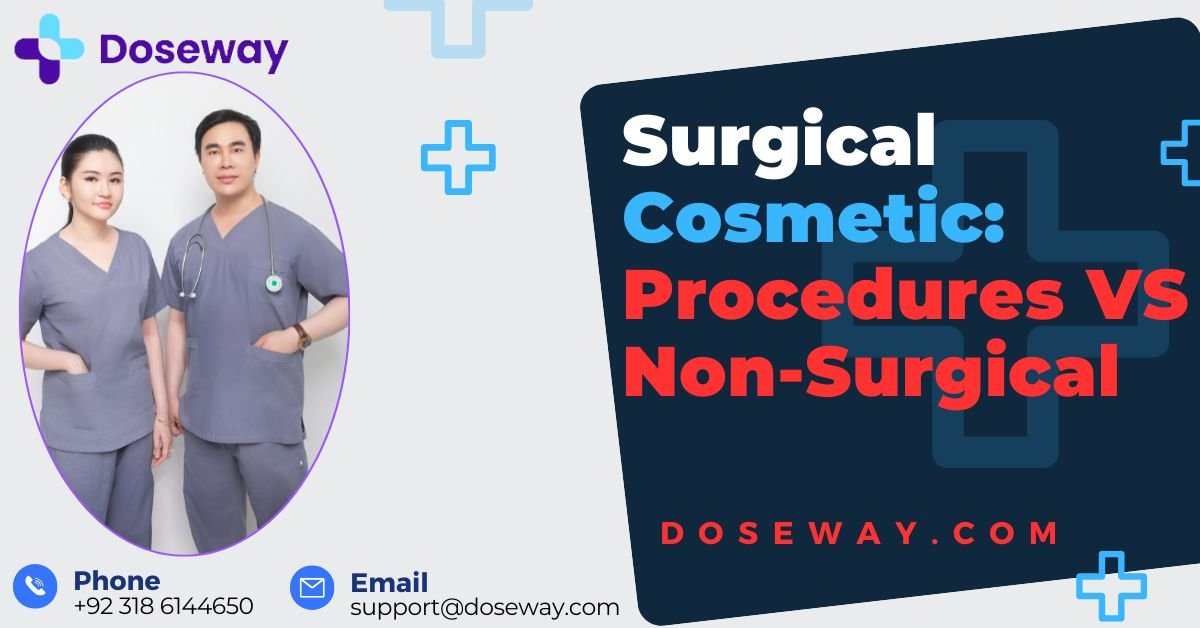
What Are the Most Common Surgical Cosmetic Procedures and Their Applications?
Surgical cosmetic procedures encompass a diverse range of interventions designed to permanently alter facial and body contours through tissue manipulation, excision, and reinforcement. These procedures address concerns that cannot be adequately corrected through non-surgical means and typically deliver the most dramatic aesthetic transformations.
Rhinoplasty represents one of the most frequently performed facial surgical procedures, addressing both aesthetic and functional nasal concerns. This complex surgery modifies nasal bone and cartilage structure to improve proportionality, correct deformities, and enhance breathing. Modern rhinoplasty techniques prioritize natural-looking results that maintain ethnic characteristics while improving harmony with other facial features. The procedure requires meticulous surgical planning and execution, with recovery spanning several weeks before final results emerge.
Breast augmentation continues to rank among the top surgical procedures worldwide, utilizing implants or fat transfer to enhance breast volume, improve symmetry, and restore post-pregnancy or weight loss volume deficit. The procedure has evolved significantly with advanced implant materials, refined surgical techniques, and personalized planning approaches. Current trends emphasize natural proportions, minimal scarring, and rapid recovery protocols that reduce downtime. The decision between implant types, sizes, and placement positions represents a highly personalized process based on individual anatomy and goals.
Abdominoplasty, commonly known as a tummy tuck, addresses abdominal wall laxity, muscle separation, and excess skin that persists despite diet and exercise. This comprehensive procedure typically involves muscle repair, excess skin excision, and umbilical repositioning to create a flatter, more toned abdominal contour. Modern techniques have evolved toward more conservative tissue removal with progressive tension closure methods that reduce complication rates and enhance recovery. The procedure proves particularly beneficial for post-pregnancy changes and massive weight loss patients.
Leading surgical procedures include:
✓ Facelift (Rhytidectomy): Addresses significant facial skin laxity, jowling, and neck banding through layered tissue repositioning
✓ Blepharoplasty: Corrects drooping eyelids and under-eye bags through precise tissue removal and reinforcement
✓ Liposuction: Removes stubborn fat deposits resistant to diet and exercise through suction-assisted extraction
✓ Breast Reduction: Alleviates physical symptoms associated with breast hypertrophy while improving proportionality
✓ Buttock Augmentation: Enhances gluteal volume and shape through implants or fat transfer techniques
What Non-Surgical Cosmetic Treatments Deliver the Most Significant Results?
The non-surgical cosmetic landscape has expanded dramatically, with numerous technologies now delivering results that approach surgical outcomes for appropriately selected concerns. These treatments utilize innovative energy-based devices, advanced injectables, and biochemical approaches to achieve meaningful aesthetic improvements without incisions or significant downtime.
Neurotoxin injections, primarily utilizing botulinum toxin type A, represent the cornerstone of non-surgical facial rejuvenation. These treatments temporarily relax hyperdynamic facial muscles that cause expression lines, particularly in the forehead, between eyebrows, and around eyes. Modern applications have expanded to include brow shaping, jawline slimming, and subtle lip elevation. The precision of modern injection techniques allows for natural-looking results that preserve expressiveness while smoothing wrinkles. Treatment sessions require just minutes, with results emerging within days and lasting three to six months.
Dermal fillers have revolutionized facial volume restoration through sophisticated hyaluronic acid-based formulations that replenish age-related volume loss, enhance contours, and smooth wrinkles. Advanced filler technologies now include varied particle sizes, cross-linking densities, and viscosity characteristics tailored to specific anatomical applications. Strategic filler placement can restore cheek volume, enhance jawline definition, improve lip proportions, and revolumize hands. The development of cannula injection techniques has improved safety profiles while enabling more natural-looking results through precise tissue plane placement.
Energy-based devices represent the most technologically advanced segment of non-surgical aesthetics, utilizing laser, radiofrequency, ultrasound, and cryolipolysis technologies to address skin quality, tissue tightening, and fat reduction. Fractional laser resurfacing creates microscopic treatment zones that stimulate collagen remodeling while minimizing downtime. Radiofrequency technologies deliver controlled thermal energy to deeper tissue layers, stimulating collagen contraction and neocollagenesis for gradual skin tightening. Ultrasound devices precisely target foundational tissue layers for lifting effects, while cryolipolysis selectively destroys fat cells through controlled cooling.
Top-performing non-surgical treatments:
✓ Hybrid Laser Treatments: Combination approaches that address pigment, texture, and tightening simultaneously
✓ Microfocused Ultrasound: Delivers precise energy to superficial muscular aponeurotic system for lifting effects
✓ Non-Surgical Body Contouring: Technologies that reduce fat, improve skin laxity, and enhance muscle definition without surgery
✓ Regenerative Injectable Therapies: Platelet-rich plasma and biostimulatory agents that improve skin quality through cellular activation
✓ Thread Lifts: Absorbable suspension sutures that provide immediate lifting with ongoing collagen stimulation

How Do Recovery Times Compare Between Surgical and Non-Surgical Procedures?
The recovery experience represents one of the most significant differentiators between surgical and non-surgical cosmetic pathways, impacting everything from lifestyle disruption to final result emergence. Understanding these timelines helps patients plan appropriately and establish realistic expectations for their treatment journey.
Surgical procedure recovery follows a predictable pattern of immediate postoperative discomfort, initial healing phase, and long-term resolution of swelling and remodeling. The first 48 hours typically involve the most significant discomfort, managed through prescribed analgesics. The initial two weeks focus on wound healing, with stitches removal occurring between days 5-14 depending on procedure type and location. Significant swelling and bruising peaks around days 3-5, then gradually resolves over several weeks. Most patients return to sedentary work within 1-2 weeks, while vigorous activity resumes gradually over 4-8 weeks. The final surgical results emerge progressively as swelling fully resolves and tissues settle into their new position, typically requiring 3-6 months for complete manifestation.
Non-surgical recovery varies dramatically by treatment type, ranging from no downtime to several days of social recovery. Neurotoxin injections require no recovery, with patients immediately resuming normal activities aside from brief precautions regarding manipulation of treated areas. Dermal fillers may involve immediate swelling and potential bruising that resolves within 3-7 days. Energy-based treatments span a wide recovery spectrum, with non-ablative devices requiring no downtime, fractional treatments involving 2-5 days of social recovery, and fully ablative procedures necessitating 1-2 weeks of significant healing. Most non-surgical body contouring involves minimal disruption, with patients returning to normal activities immediately or within 1-2 days.
Comparative recovery timelines:
✓ Surgical Facelift: 10-14 days until presentable socially, 3-4 weeks until normal activities, 3-6 months for final results
✓ Non-Surgical Facelift (Threads): 3-7 days until swelling and bruising resolve, immediate lifting effect with continued improvement
✓ Surgical Breast Augmentation: 5-7 days until light activity resumption, 4-6 weeks until vigorous exercise, 3-6 months for implant settling
✓ Non-Surgical Breast Enhancement (Fillers): 1-3 days until minor swelling resolves, immediate results with 12-18 month longevity
✓ Surgical Liposuction: 3-5 days until return to sedentary work, 2-4 weeks until exercise, 3-6 months for final contour emergence
✓ Non-Surgical Fat Reduction: No downtime, gradual improvement over 2-4 months as body processes disrupted fat cells
What Are the Cost Considerations Between Surgical and Non-Surgical Pathways?
The financial investment required for cosmetic enhancement varies dramatically between surgical and non-surgical pathways, with complex considerations beyond initial price tags. Understanding the complete economic picture, including long-term maintenance requirements, helps patients make informed decisions aligned with their budgets and goals.
Surgical procedures involve significant upfront costs that encompass surgeon fees, facility expenses, anesthesia services, implants when applicable, and postoperative care. These investments typically range from several thousand to tens of thousands of dollars depending on procedure complexity, geographic location, and surgeon expertise. While substantial, this single investment typically provides permanent or long-lasting results that may not require significant additional financial outlays for many years. Some surgical procedures, such as breast augmentation with implants, may involve future replacement costs, but these are typically measured in decades rather than months or years.
Non-surgical treatments present lower initial costs but require ongoing maintenance to sustain results. The financial model for non-surgical approaches resembles subscription-based wellness services rather than one-time investments. Neurotoxin treatments typically require refreshment every 3-6 months, while dermal fillers maintain optimal appearance with touch-ups every 12-24 months. Energy-based treatments often involve initial series of 3-6 sessions followed by annual maintenance appointments. When calculated over a 5-10 year period, the cumulative investment in non-surgical maintenance often equals or exceeds the one-time cost of comparable surgical procedures.
Cost comparison over five years:
✓ Surgical Facelift: $12,000-$20,000 one-time investment, minimal maintenance costs
✓ Non-Surgical Facelift Maintenance: $2,000-$4,000 annually for combination treatments, totaling $10,000-$20,000 over five years
✓ Surgical Breast Augmentation: $6,000-$12,000 initial cost, potential implant replacement in 10-15 years
✓ Non-Surgical Breast Enhancement: $3,000-$6,000 annually for filler maintenance, totaling $15,000-$30,000 over five years
✓ Surgical Liposuction: $4,000-$10,000 per area treated, permanent results from removed fat cells
✓ Non-Surgical Fat Reduction: $1,000-$3,000 per session, typically 2-3 sessions recommended, with potential touch-ups
How Do Risk Profiles Differ Between Surgical and Non-Surgical Cosmetic Procedures?
The safety considerations for cosmetic procedures span a broad spectrum, with surgical interventions carrying inherently higher risks due to their invasive nature, while non-surgical treatments present different safety profiles dominated by technique-dependent complications and rare but serious adverse events.
Surgical risks include anesthesia complications, bleeding, infection, poor wound healing, scarring, asymmetry, and unsatisfactory aesthetic outcomes. The magnitude of these risks varies by procedure type, with body contouring procedures carrying higher infection rates due to larger wound surfaces, while facial procedures present greater challenges with precision and symmetry. Modern surgical safety protocols have significantly reduced serious complications through improved sterile technique, advanced anesthesia monitoring, venous thromboembolism prophylaxis, and meticulous surgical planning. Board-certified plastic surgeons operating in accredited facilities typically report major complication rates below 2-3% for most common cosmetic procedures.
Non-surgical risks primarily relate to injection-related complications, inappropriate energy settings, and unanticipated tissue responses. Vascular compromise represents the most serious injection-related complication, potentially leading to tissue necrosis or blindness if filler accidentally enters blood vessels. Nerve injury may occur with both injectables and energy devices, causing temporary or permanent muscle weakness or sensory changes. Skin injuries from energy-based devices range from temporary redness and swelling to permanent pigment changes or scarring. The non-surgical landscape also carries unique risks related to unqualified practitioners, as many states allow non-physicians to perform these treatments without comprehensive medical training.
Comparative risk analysis:
✓ Anesthesia Risks: Exclusive to surgical procedures, ranging from medication reactions to respiratory complications
✓ Infection Risks: Higher in surgical procedures (1-3%) versus minimal in non-surgical treatments when proper technique used
✓ Vascular Complications: More common in non-surgical filler injections than in surgical procedures
✓ Nerve Injury: Possible in both pathways, with surgical injuries typically affecting sensory nerves while injectable injuries may affect motor function
✓ Unsatisfactory Results: Revision rates approximately 10-15% for surgical procedures versus 5-10% for non-surgical treatments

What Technological Advancements Are Shaping the Future of Cosmetic Procedures?
The cosmetic medicine landscape continues to evolve at an accelerated pace, with technological innovations enhancing both surgical precision and non-surgical efficacy. These advancements improve safety profiles, reduce recovery times, and expand treatment possibilities for increasingly diverse patient concerns.
Surgical technology has been revolutionized by three-dimensional imaging systems that allow precise preoperative planning and simulation of potential outcomes. These sophisticated software platforms enable surgeons to measure anatomical relationships, simulate tissue changes, and communicate expected results with patients through visual representations. The integration of intraoperative navigation systems, similar to those used in neurosurgery and orthopedics, now provides real-time guidance during complex procedures like rhinoplasty and jawline contouring. Advanced instrumentation including powered dissection devices, hemostatic sealing systems, and endoscopic visualization has refined surgical precision while reducing tissue trauma.
Regenerative medicine technologies represent the frontier of both surgical and non-surgical enhancement, focusing on harnessing the body’s innate healing capacity rather than merely removing or rearranging tissues. Platelet-rich plasma (PRP), stem cell therapies, and growth factor formulations now complement traditional approaches by improving tissue quality and accelerating recovery. The emerging field of exosome therapy shows promise for enhancing skin regeneration and improving wound healing through cellular communication rather than cellular replacement. These biologics increasingly serve as adjuncts to both surgical and non-surgical treatments, improving outcomes and longevity.
Robotic assistance has entered the cosmetic surgery arena, particularly for procedures requiring extreme precision or working in confined anatomical spaces. Robotic systems enhance surgical dexterity, eliminate tremor, and provide magnified three-dimensional visualization beyond human capability. While currently utilized primarily for complex reconstructive procedures, robotic technology continues to advance toward broader cosmetic applications with potential for reduced scarring and enhanced precision.
Groundbreaking technological developments:
✓ Biointegrated Scaffolding: Absorbable mesh materials that provide structural support while stimulating natural tissue ingrowth
✓ Targeted Energy Delivery: Technologies that precisely control energy deposition depth and volume for customized tissue effects
✓ Personalized Implants: 3D-printed custom implants designed from patient-specific imaging data
✓ Smart Fillers: Next-generation injectables with controlled degradation profiles and additional functional benefits
✓ Non-Invasive Body Contouring: Technologies that simultaneously reduce fat, tighten skin, and build muscle without surgery
How Does the Consultation Process Differ for Surgical vs Non-Surgical Treatments?
The patient consultation represents a critical component of the cosmetic journey, with distinct approaches for surgical versus non-surgical pathways that reflect their differing complexities, risk profiles, and decision-making processes. Understanding these differences helps patients prepare appropriately and maximize the value of their consultation experience.
Surgical consultations typically involve comprehensive medical evaluation, detailed procedure discussion, and thorough informed consent processes. The initial surgical consultation generally spans 60-90 minutes and includes complete medical history review, physical examination, photography, and frequently computer imaging to simulate potential outcomes. Surgeons assess not only the anatomical concerns but also patient motivations, psychological readiness, and support system availability. The informed consent process for surgical procedures involves detailed discussion of potential complications, recovery expectations, and alternative treatments. Patients typically require a cooling-off period between consultation and surgery scheduling to ensure thoughtful decision-making.
Non-surgical consultations often focus on specific concern analysis, product or technology selection, and demonstration of expected outcomes. These appointments typically range from 30-60 minutes and may involve trial treatments or test spots to assess tissue response. The non-surgical consultation places greater emphasis on educating patients about the gradual, cumulative nature of most non-surgical results and the maintenance requirements for sustained benefits. Since many non-surgical treatments can be performed immediately following consultation, the decision-making process may be more rapid, though ethical practitioners still encourage thoughtful consideration, particularly for more significant treatments.
Key consultation differences:
✓ Medical Evaluation Depth: Surgical consultations include a comprehensive health assessment, while non-surgical focuses on specific contraindications
✓ Imaging Utilization: Surgical consultations frequently use 3D simulation, while non-surgical consultations may use before/after galleries of similar patients
✓ Consent Process: Surgical requires detailed signed consent forms, while non-surgical may involve streamlined documentation
✓ Follow-up Planning: Surgical includes a structured postoperative care schedule, while non-surgical may involve optional touch-up appointments
✓ Financial Discussion: Surgical involves complete cost transparency, while non-surgical may discuss package pricing for a series of treatments
What Are the Psychological Considerations When Choosing Between Surgical and Non-Surgical Pathways?
The decision between surgical and non-surgical cosmetic approaches involves significant psychological dimensions that impact both satisfaction with the process and ultimate contentment with results. Understanding these factors helps patients navigate their aesthetic journey with appropriate emotional preparation and realistic expectation management.
Patient motivation represents a crucial psychological consideration, with optimal outcomes occurring when patients seek treatment for themselves rather than external pressure. The most satisfied surgical patients typically desire permanent structural changes to address long-standing concerns that impact self-image and confidence. Non-surgical patients often seek gradual enhancements that refresh their appearance while maintaining their essential features. Both pathways require honest self-assessment regarding expectations, with unrealistic fantasies of perfection potentially leading to dissatisfaction regardless of technical success.
The psychological adaptation to change differs significantly between surgical and non-surgical pathways. Surgical patients experience immediate, dramatic transformation that requires substantial psychological adjustment to their new appearance. This sudden change can provoke temporary identity disruption or “stranger in the mirror” phenomena until neurological recognition catches up with physical changes. Non-surgical patients experience gradual evolution of their appearance that allows progressive psychological adaptation, typically resulting in smoother emotional integration of changes.
Psychological assessment points:
✓ Motivation Clarity: Understanding whether desires stem from internal or external pressures
✓ Expectation Realism: Aligning hoped-for outcomes with what procedures can actually deliver
✓ Change Tolerance: Assessing comfort with dramatic versus gradual transformation
✓ Imperfection Acceptance: Understanding that all procedures have limitations and potential compromises
✓ Support System: Evaluating availability of emotional and practical support during recovery
How Do Cultural and Demographic Factors Influence Pathway Selection?
The selection between surgical and non-surgical cosmetic pathways demonstrates significant variation across cultural, generational, and demographic lines, reflecting differing beauty ideals, economic factors, and social acceptance of aesthetic procedures. Understanding these influences helps contextualize personal decision-making within broader societal trends.
Generational preferences reveal distinct patterns in pathway selection, with older demographics traditionally favoring surgical approaches that deliver comprehensive, long-lasting correction of age-related changes. Baby Boomers and Generation X patients often prioritize definitive solutions with proven track records, accepting longer recovery for permanent improvements. Millennial and Generation Z patients typically prefer non-surgical approaches that offer minimal downtime, natural-looking results, and flexibility to adapt as trends evolve. Younger demographics also demonstrate greater comfort with preventative treatments that delay rather than reverse signs of aging.
Cultural beauty standards dramatically influence procedure selection and desired outcomes. Western beauty ideals often emphasize dramatic transformation, structural enhancement, and reversal of aging signs, frequently leading toward surgical solutions. Eastern aesthetics typically prioritize subtle refinement, preservation of ethnic characteristics, and harmony with natural features, often aligning with non-surgical approaches. The globalization of beauty standards through media and social platforms has created hybrid ideals that blend cultural preferences, expanding treatment possibilities across demographic groups.
Gender-based differences in pathway selection reflect varying aesthetic priorities and social acceptance. Male patients traditionally preferred non-surgical approaches that deliver subtle enhancement without obvious “work done” appearance, though surgical acceptance among men continues to grow. Female patients demonstrate greater willingness to consider both pathways based on concern severity rather than pathway type. The expanding male aesthetic market has driven development of specialized techniques and products tailored to masculine anatomy and aging patterns.
Demographic influence patterns:
✓ Age-Based Trends: Younger patients favor prevention and minimal downtime, older patients prioritize comprehensive correction
✓ Cultural Preferences: Varying ideals regarding dramatic transformation versus subtle refinement
✓ Gender Considerations: Differing priorities regarding obvious versus undetectable enhancement
✓ Geographic Variations: Regional concentrations of specific procedures based on cultural beauty standards
✓ Socioeconomic Factors: Disposable income allocation toward upfront surgical investment versus ongoing non-surgical maintenance

What Are the Most Important Questions to Ask During a Cosmetic Consultation?
The consultation process represents the foundation for successful cosmetic outcomes, with specific questioning strategies that elicit crucial information for informed decision-making. Preparing thoughtful questions ensures patients gather complete information to evaluate their options and select the most appropriate practitioner.
Procedure-specific questions should explore the technical approach, expected outcomes, and potential alternatives. Patients should inquire about the recommended technique and why it’s appropriate for their specific concerns, including how it addresses their unique anatomical considerations. Understanding the evidence behind the recommendation, including clinical studies or outcome data, provides objective foundation for the proposed plan. Questions about potential combinations with other procedures help identify comprehensive approaches that might deliver enhanced results.
Experience and qualification questions establish practitioner expertise and procedural volume. Patients should directly ask about the surgeon’s specific experience with the proposed procedure, including how frequently they perform it and any specialized training they’ve completed. Inquiring about before-and-after galleries of similar patients provides visual evidence of consistent outcomes. Questions about facility accreditation and hospital privileges verify the practice meets recognized safety standards.
Essential consultation questions:
✓ What are all my options for addressing this concern, including both surgical and non-surgical approaches?
✓ What specific technique do you recommend for my anatomy and why?
✓ How many procedures of this type have you performed, and what are your complication rates?
✓ What is the complete cost breakdown, including all fees and potential additional expenses?
✓ What does the typical recovery process involve, and what support will I receive during recovery?
✓ What results can I realistically expect, and what are the potential limitations or compromises?
✓ What happens if I experience complications or am unhappy with my results?
The financial discussion should extend beyond the basic procedure cost to include all potential expenses. Patients should request complete fee transparency, including surgeon fees, facility costs, anesthesia charges, implant prices when applicable, and potential revision expenses. Understanding payment options, cancellation policies, and financing availability helps with practical planning. The conversation should also explore insurance considerations, particularly for procedures with functional components that might qualify for partial coverage.
The complication and revision policy discussion represents one of the most important yet frequently overlooked consultation components. Patients should directly ask about the practitioner’s specific complication rates and how they manage unexpected outcomes. Understanding revision policies, including associated costs and timing, prepares patients for potential secondary procedures. This conversation demonstrates the practitioner’s commitment to patient satisfaction throughout the entire treatment journey, not just the initial procedure.
How Can Patients Prepare for Surgical vs Non-Surgical Procedures?
Preparation protocols differ significantly between surgical and non-surgical pathways, reflecting their varying impact on the body and recovery requirements. Appropriate preparation enhances safety, improves outcomes, and facilitates smoother recovery experiences regardless of treatment type.
Surgical preparation begins weeks to months before the procedure date, involving comprehensive health optimization and logistical planning. Medical preparation typically includes preoperative laboratory testing, potential medical clearance for patients with health conditions, and cessation of medications and supplements that increase bleeding risk. Nutritional optimization focuses on adequate protein intake, vitamin supplementation, and hydration to support healing capacity. Physical preparation involves arranging support for the recovery period, preparing the home environment, and acquiring necessary supplies like compression garments, wound care materials, and comfortable clothing.
Non-surgical preparation typically involves shorter timelines focused on minimizing complications and maximizing results. Skin preparation for energy-based treatments often includes pre-treatment regimens with specific active ingredients that enhance results and reduce downtime. Medication adjustments may involve temporary cessation of blood thinners to minimize bruising risk for injectable treatments. Unlike surgical preparation, non-surgical approaches rarely require significant lifestyle modifications or support system arrangements, though some treatments benefit from simple planning like scheduling around important events to allow for potential temporary swelling or redness.
Preparation comparison:
✓ Timeline: Surgical requires weeks to months, non-surgical typically days to weeks
✓ Medical Clearance: Surgical often requires formal clearance, non-surgical typically does not
✓ Medication Adjustments: Both may require modification, but surgical involves more comprehensive restrictions
✓ Support System: Surgical requires arranged assistance, non-surgical typically does not
✓ Financial Preparation: Surgical involves significant upfront payment, non-surgical may involve package purchases
Psychological preparation represents a crucial yet frequently overlooked component for both pathways. Surgical patients benefit from mental rehearsal of the recovery process and realistic expectation setting regarding the emotional challenges of the immediate postoperative period. Non-surgical patients should prepare for the gradual nature of results and potential need for multiple treatments to achieve desired outcomes. Both pathways benefit from clear understanding of the limitations of cosmetic enhancement and its role within broader self-image and confidence foundations.
What Are the Latest Trends in Surgical and Non-Surgical Cosmetic Procedures?
The cosmetic medicine landscape evolves continuously, with emerging trends reflecting technological advancements, changing beauty ideals, and growing consumer sophistication. Understanding these developments helps patients make contemporary choices aligned with current best practices and aesthetic preferences.
The dominant trend across both surgical and non-surgical domains is the movement toward natural-looking results that enhance rather than transform appearance. The exaggerated features and obvious “worked on” look of previous decades have given way to subtle enhancements that preserve individual characteristics while refreshing appearance. This trend influences surgical technique selection toward more conservative tissue removal, anatomical preservation, and attention to natural proportions. In the non-surgical realm, it manifests as smaller volume injectable treatments, combination approaches that address multiple aging components, and energy-based treatments that gradually improve tissue quality without dramatic alteration.
Preventative aesthetics represents another significant trend, particularly among younger demographic groups. Rather than waiting for established signs of aging to correct, patients in their twenties and thirties now proactively seek treatments that delay aging manifestation. This approach utilizes non-surgical technologies like low-energy laser therapies, regenerative injectables, and early neurotoxin intervention to preserve tissue quality and prevent formation of dynamic lines. The preventative philosophy represents a fundamental shift from correction to preservation, with significant implications for long-term aging patterns and treatment requirements.
Gender-neutral aesthetics continues to expand, with developing techniques specifically designed for masculine anatomy and aging patterns. Male patients increasingly seek both surgical and non-surgical enhancements, driving innovation in approaches that address typical male concerns like jawline definition, neck refinement, and brow positioning while preserving masculine characteristics. The growing acceptance of cosmetic procedures among men reflects evolving social norms and expanded understanding of aesthetic self-care as gender-neutral.
Emerging trends:
✓ Regenerative Approaches: Treatments that activate natural healing processes rather than merely adding volume or removing tissue
✓ Minimally Invasive Surgery: Techniques that deliver surgical results through smaller incisions with reduced recovery
✓ Personalized Protocols: Treatment plans based on genetic testing, lifestyle factors, and individual aging patterns
✓ Combination Therapies: Strategic layering of multiple technologies to address aging comprehensively
✓ Digital Integration: Use of AI, virtual reality, and 3D imaging for enhanced planning and communication
What Role Does Age Play in Determining the Appropriate Cosmetic Pathway?
Chronological age represents one of several factors in cosmetic pathway determination, with biological age, skin quality, and aging pattern progression providing more meaningful guidance than numerical age alone. Understanding the relationship between age and treatment appropriateness helps patients select approaches aligned with their specific aging manifestation.
Patients in their twenties and thirties typically present with early aging signs primarily related to dynamic expression lines, early volume changes, and skin textural issues. This demographic typically achieves optimal outcomes through non-surgical preventative approaches that address concerns before they become established. Neurotoxin treatments prevent dynamic lines from becoming static, early filler placement replenishes subtle volume shifts, and energy-based treatments maintain skin quality. Surgical interventions are rarely indicated in this age group except for specific structural concerns or significant genetic predispositions.
The forties and fifties typically represent the transition period where both surgical and non-surgical approaches may be appropriate depending on individual aging patterns. Patients with excellent skin elasticity and minimal tissue descent may continue achieving satisfactory results through advanced non-surgical approaches like microfocused ultrasound, regenerative therapies, and strategic filler placement. Those with significant skin laxity, jowling, or brow descent typically benefit from surgical intervention that addresses the structural components of aging beyond what non-surgical approaches can correct. This age range frequently involves combination approaches that pair surgical correction with non-surgical refinement.
Patients beyond their sixties typically present with established aging changes involving significant tissue descent, volume redistribution, and skin quality alterations. This demographic typically achieves the most dramatic improvements through comprehensive surgical approaches that reposition descended tissues, remove excess skin, and restore structural support. Non-surgical treatments in this age group often serve as adjuncts to surgery rather than primary treatments, addressing residual concerns or providing maintenance between surgical procedures.
Age-based pathway guidance:
✓ 20s-30s: Primarily non-surgical preventative approaches with rare structural exceptions
✓ 40s-50s: Mixed surgical and non-surgical based on individual aging severity and tissue characteristics
✓ 60s+: Primarily surgical for significant concerns with non-surgical adjunctive treatments
How Do Seasonal Considerations Impact Surgical vs Non-Surgical Procedure Timing?
The timing of cosmetic procedures often involves seasonal considerations that impact recovery comfort, social discretion, and practical logistics. Understanding these seasonal influences helps patients plan their treatments for optimal experiences and outcomes.
Surgical procedures frequently align with seasonal patterns that accommodate recovery requirements. The fall and winter months traditionally represent peak surgical seasons, offering several advantages for recovery. Cooler temperatures minimize swelling discomfort and reduce sweating that can complicate wound healing. The decreased sun exposure minimizes hyperpigmentation risk in healing incisions. The holiday season often provides natural downtime for professionals with use-it-or-lose-it vacation days, while students benefit from extended school breaks. The layered clothing of colder months conveniently conceals compression garments and temporary swelling.
Non-surgical treatments demonstrate less pronounced seasonal patterning due to their minimal recovery requirements, though some considerations still apply. Injectable treatments may see increased demand before major events or holidays regardless of season. Energy-based treatments with significant recovery, such as ablative laser resurfacing, often follow surgical seasonal patterns to minimize sun exposure during healing. Non-surgical body contouring frequently peaks before summer as patients prepare for beach season, though year-round maintenance approaches are becoming more common.
Seasonal planning considerations:
✓ Winter Advantages: Natural downtime, clothing coverage, reduced sun exposure, cooler temperatures
✓ Spring Considerations: Timing for summer readiness, potential pollen allergies affecting recovery
✓ Summer Challenges: Increased swelling, sun protection requirements, social activity interference
✓ Fall Benefits: Summer tan fading, holiday downtime planning, temperate weather conditions
What Are the Most Common Misconceptions About Surgical and Non-Surgical Cosmetic Procedures?
The cosmetic medicine field contains numerous misconceptions that can lead to inappropriate expectations, procedure selection, or practitioner choice. Dispelling these myths through accurate information helps patients make informed decisions aligned with reality rather than marketing claims or anecdotal experiences.
The most prevalent surgical misconception involves the belief that cosmetic surgery delivers perfect, guaranteed results that match computer simulations exactly. While imaging technology provides helpful visualization of potential outcomes, numerous biological factors influence final results including individual healing characteristics, tissue responses, and anatomical limitations. The concept of a “perfect” outcome proves problematic, as aesthetic preferences vary and biological systems demonstrate inherent variability. Understanding that surgery represents an improvement rather than perfection helps establish appropriate expectations.
The dominant non-surgical misconception involves the belief that these treatments can achieve surgical-level results without surgery. Marketing language like “liquid facelift” or “non-surgical nose job” creates unrealistic expectations about what injectables can accomplish. While non-surgical treatments provide meaningful improvements, they cannot duplicate the comprehensive tissue repositioning, excess skin removal, or structural modification possible with surgery. Understanding these limitations prevents disappointment and helps patients select the appropriate pathway for their concerns.
Common misconceptions:
✓ Surgery is Painful and Dangerous: Modern techniques and anesthesia have significantly improved comfort and safety
✓ Non-Surgical Means No Recovery: Many non-surgical treatments involve downtime and recovery considerations
✓ Cosmetic Procedures Are Vanity: Most patients seek treatment for improved confidence and quality of life
✓ Results Last Forever: All procedures have finite longevity, including surgical interventions
✓ More Expensive Always Means Better: Outcome quality relates to practitioner skill, not necessarily price
The financial misconception that non-surgical treatments represent the more economical choice proves inaccurate when considering long-term maintenance costs. While individual non-surgical sessions cost less than surgical procedures, the cumulative expense of maintenance over years often equals or exceeds the one-time surgical investment. Patients benefit from understanding the complete financial picture, including potential future costs for both pathways.

Frequently Asked Questions
What is the main difference between surgical and non-surgical cosmetic procedures?
The fundamental difference lies in the level of invasiveness and mechanism of action. Surgical procedures involve incisions, tissue manipulation under anesthesia, and significant recovery periods, providing permanent structural changes. Non-surgical procedures utilize injectables, energy-based devices, or topical applications without breaking the skin barrier, offering gradual improvements with minimal downtime but requiring ongoing maintenance.
How long do results from non-surgical treatments typically last?
Non-surgical treatment longevity varies significantly by modality. Neurotoxin results typically last 3-6 months, dermal fillers persist 6-24 months depending on product and placement, and energy-based device results may last 1-5 years with proper maintenance. Most non-surgical approaches require periodic touch-ups to maintain optimal appearance, creating an ongoing investment rather than one-time correction.
At what age should someone consider surgical versus non-surgical approaches?
Chronological age provides limited guidance, as biological aging varies significantly between individuals. Generally, patients in their 20s-30s benefit most from non-surgical preventative approaches, 40s-50s represent a transition period where both pathways may be appropriate, and patients beyond 60 typically achieve best outcomes with surgical correction for significant concerns. The decision should be based on aging severity rather than numerical age.
Are non-surgical procedures safer than surgical options?
Non-surgical procedures generally present lower overall risk profiles but carry unique safety considerations. Surgical risks include anesthesia complications, infection, and poor wound healing, while non-surgical risks involve vascular compromise, nerve injury, and inappropriate energy delivery. Both pathways demonstrate excellent safety records when performed by properly trained practitioners in appropriate settings.
Can non-surgical treatments achieve the same results as surgery?
Non-surgical treatments cannot duplicate the comprehensive tissue repositioning, excess skin removal, or structural modification possible with surgery. While modern non-surgical technologies deliver increasingly impressive results, they remain fundamentally different approaches best suited for different concerns. Non-surgical treatments excel at early to moderate aging signs, while surgery addresses significant tissue changes beyond non-surgical correction capacity.
How much downtime is required after surgical cosmetic procedures?
Surgical recovery varies by procedure complexity and individual healing capacity. Minimally invasive procedures may require 1-2 weeks before returning to normal activities, while comprehensive procedures like facelifts or tummy tucks typically involve 2-3 weeks of significant recovery and several months before final results emerge. Most patients return to sedentary work within 10-14 days, with vigorous activity resuming gradually over 4-8 weeks.
What is the cost difference between surgical and non-surgical approaches?
Surgical procedures involve significant upfront costs ranging from several thousand to tens of thousands of dollars but typically provide permanent or long-lasting results. Non-surgical treatments present lower initial costs but require ongoing maintenance that often equals or exceeds surgical investment over 5-10 years. The complete financial picture should include all procedure costs, potential revision expenses, and long-term maintenance requirements.
Recommended Affiliate Products/Brands
- Skincare: Zo Skin Health, SkinMedica, Obagi – high-ticket medical skincare with excellent commission structures
- Recovery Products: Embrace Scar Therapy, Marena Recovery garments – essential postoperative products
- Non-Surgical Devices: NuFace, ZIIP Beauty – at-home microcurrent devices with recurring revenue potential
- Supplement Lines: SkinCeuticals Antioxidants, Vital Proteins Collagen – complementary wellness products
- Aesthetic Tools: StackedSkincare tools, Rose quartz rollers – accessory products with high impulse purchase potential
- Professional Treatments: Gift cards for Botox, fillers, or laser treatments – high-value service sales
- Post-Procedure Cosmetics: Colorescience, Jane Iredale – mineral makeup suitable for healing skin

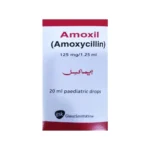



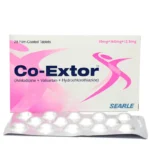

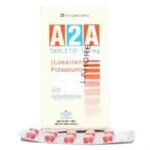
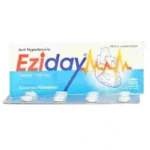
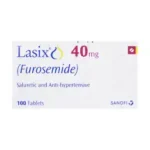

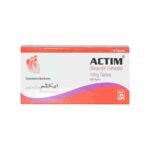
Add a Comment